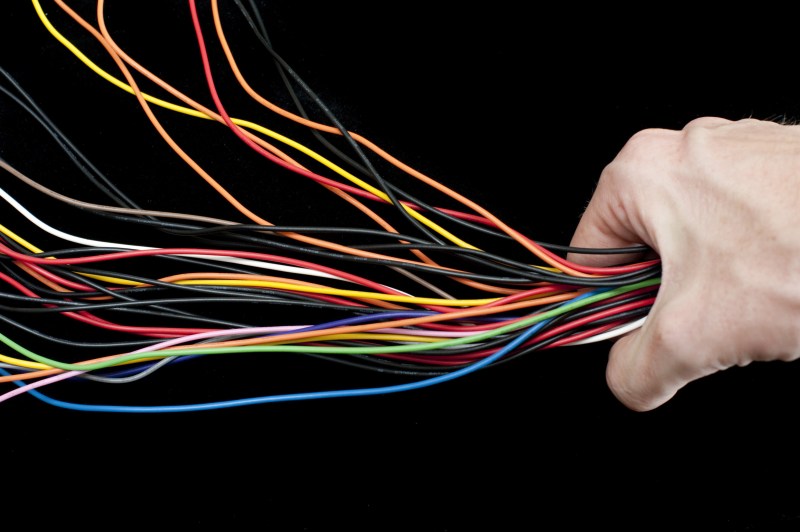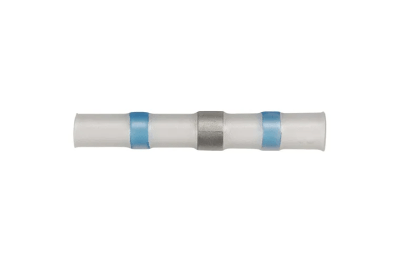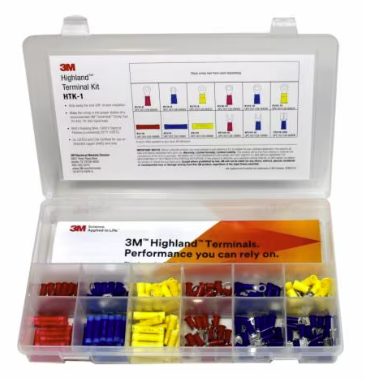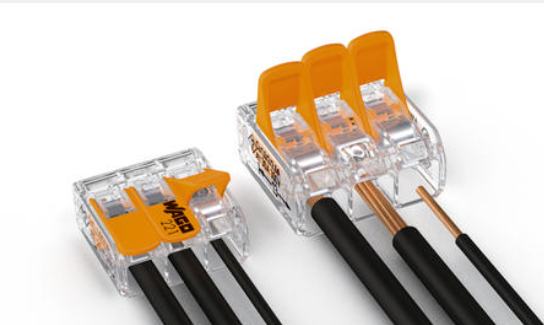
Ah, soldering. It’s great for sticking surface mount parts to a PCB, and it’s really great for holding component legs in a plated through-hole. It also does a pretty great job of holding two spliced wires together.
With that said, it can be a bit of a fussy process. There are all manner of YouTube videos and image tutorials on the “properest” way to achieve this job. Maybe it’s the classic Lineman’s Splice, maybe it’s some NASA-approved method, or maybe it’s one of those ridiculous ones where you braid all the copper strands together, solder it all up, and then realize you’ve forgotten to put the heat shrink on first.
Sure, soldering’s all well and good. But what about some of the other ways to join a pair of wires?
You Want Easy, Reliable, and Clean

These days, there are all kinds of ways to join a pair of wires. Some are relatively new-fangled and nifty, while others have been around since nearly the dawn of all this electrickery business. Let’s list off a few, and you can tell us your favorites and all the ones we missed in the comments.
First up is the solder-seal connector. Yes, you got us, this is still essentially soldering, but it’s kind of streamlined compared to doing it all by hand. We’re not entirely sure when the solder seal connector was invented, but it was probably in the 1980s, given the 1988 date on this US patent for the invention. Solder seal connectors are basically a piece of heat shrink tube with a blob of solder in the middle, and two blobs of heat-activated adhesive on either side. To use one, you take two wires, and then mesh the stripped ends together ready to be soldered. Then, you slide the solder seal connector over the join such that the solder bead is over stripped wire to be soldered. Heating the solder seal connector with the heat gun will melt the solder creating an electrical joint, while also shrinking the heat shrink and activating the adhesive to grab on to the insulation of each wire. You end up with a tough, waterproof joint in pretty much two easy steps. Plus it’s usually less blobby than your own efforts to solder a splice by hand.

Of course, then we have crimps. Crimps are great, if you use proper crimp tools and the right crimps that go with them. They’re a great way to make connections quickly and cleanly with zero heat. They’re credited in some contexts with being more reliable than solder joints, too, particularly in applications like aerospace or motorsport. Of course, if you use crappy crimp tools or crimps or just mismatch them, you’re in for a lot of pain. You’ll get pullouts and failures and all kinds of issues. They can also be expensive if you’re using super fancy crimps with certain connector families, but for joining two wires together, they’re usually pretty cheap.
For those uninterested in learning to operate a soldering iron or a crimp tool, there are even simpler solutions. 3M ScotchLoks, in their most primitive foldable form known as the 560, are considered a great way to join wires if you want to do a terrible car stereo install on the cheap. Go on, buy a $2000 beater off Craigslist or Facebook Marketplace, pull out the stereo, and you’re sure to find a nest of these awful plastic monstrosities. You thread two wires through, and then force the clasp closed, which forces a metal blade to slice through the insulation and grip both wires.

In practice, unless you have your wire types and gauges perfect, they often tend to cut or damage the wire and eventually fail. Worse if there’s movement that allows them to flex and chew their way through a wire. They also hurt your hands to use and offer no protection against the elements. Better solutions do exist in this category. More advanced ScotchLok and PressLok products exist, often with gel fillings that offer corrosion resistance and more reliable gripping of the wire without damage.
More recently, though, Wago connectors have grown in popularity. They’re a sort of deluxe-looking lever-close terminal block solution. When the lever is lifted, an internal metal contact is lifted. When the lever is placed back down, it grips the wire. By using a seperate lever and contact for each wire to be joined, the Wago connector can be used to join different wire types and gauges quite easily.

F
They’re becoming popular for use in all kinds of contexts, from DIY electrical work to more serious industrial uses.
We’ve listed a few of the most popular solder-ish and non-soldery ways to join wires and make electrical connections, now it’s over to you. What works, and what doesn’t? What did we miss? Sound off below and tell us your ultimate solutions for these jobs, especially when soldering isn’t the go-to.
Featured image: “Streamlining multiple wires” by [gratuit].
Ask Hackaday: What Do You Do When You Can’t Solder?
Source: Manila Flash Report
0 Comments